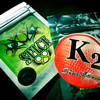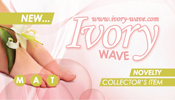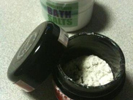“Synthetic or designer drugs” have been getting a lot of media coverage—on TV, in newspapers, and on online sites such as YouTube. Perhaps you’ve heard some of your students mention “fake marijuana” or “legal speed”. You may be wondering what this chatter is about. Let’s take a look at this growing and dangerous trend in drug use, and what you can do as a Project ALERT teacher to help protect your students.
What are Designer Drugs?
Synthetic generally means man-made and designer refers to altering chemicals in a manner designed to mimic the effects of illicit drugs. The terms are commonly used interchangeably.
Designer drugs are made with the intent to chemically resemble a particular illegal drug not only in looks but also in effects. This may sound familiar, as designer drugs are not new phenomena. Drugs such as Ecstasy (MDMA), Methamphetamines and LSD have been around for some time and are synthetic. So what is driving the current media attention?
Recently there has been an emergence of synthetic drugs that mimic the effects of marijuana and speed. National Poison Control Centers and emergency departments throughout the county are reporting a sharp increase in cases of people utilizing synthetic drugs and experiencing serious side effects from rapid heart rate and increased blood pressure to extreme paranoia, delusions, hallucinations, and even a few cases of death.
What is Synthetic Marijuana?
 Synthetic Marijuana known as K2, Spice, Blaze and Red X Dawn is a psychoactive herbal and chemical product, and when consumed it mimics the effects of cannabis. The THC-like chemical (THC is the psychoactive substance in marijuana that creates the high) is sprayed onto plant material such as dried leaves and sold in small packets. It is marketed as "incense", or "potpourri" with the package noting "not for human consumption". However, the buyers know it is fake marijuana and smoke it in pipes or rolled in cigarette paper. The high is often more intense than that of natural marijuana and the side effects have landed some users in emergency rooms.
Synthetic Marijuana known as K2, Spice, Blaze and Red X Dawn is a psychoactive herbal and chemical product, and when consumed it mimics the effects of cannabis. The THC-like chemical (THC is the psychoactive substance in marijuana that creates the high) is sprayed onto plant material such as dried leaves and sold in small packets. It is marketed as "incense", or "potpourri" with the package noting "not for human consumption". However, the buyers know it is fake marijuana and smoke it in pipes or rolled in cigarette paper. The high is often more intense than that of natural marijuana and the side effects have landed some users in emergency rooms.What is Synthetic Speed?
 Fake speed is relatively new to the drug scene and is often packaged and referred to as “bath salts”. This is misleading because this particular product is not for use in your tub. It is a white or yellowish powder sold in packets or small containers. It may be labeled as a “plant food” stating “not for human consumption” on the package. “Bath salts” typically contain mephedrone or MDPV (methylenedioxypyrovalerone), which is a psychoactive drug with stimulant properties. The user snorts the powder or less commonly injects it into a vein. Fake speed is marketed under many names including Red Dove, Blue Silk, Zoom, Bloom, Cloud Nine, Ocean Snow, Lunar Wave, Vanilla Sky, Ivory Wave, White Lightning, Scarface and Hurricane Charlie (American Association of Poison Control Centers, 2011).
Fake speed is relatively new to the drug scene and is often packaged and referred to as “bath salts”. This is misleading because this particular product is not for use in your tub. It is a white or yellowish powder sold in packets or small containers. It may be labeled as a “plant food” stating “not for human consumption” on the package. “Bath salts” typically contain mephedrone or MDPV (methylenedioxypyrovalerone), which is a psychoactive drug with stimulant properties. The user snorts the powder or less commonly injects it into a vein. Fake speed is marketed under many names including Red Dove, Blue Silk, Zoom, Bloom, Cloud Nine, Ocean Snow, Lunar Wave, Vanilla Sky, Ivory Wave, White Lightning, Scarface and Hurricane Charlie (American Association of Poison Control Centers, 2011).Where do users buy these drugs?
 These designer drugs can be found rather easily. Drug Enforcement
These designer drugs can be found rather easily. Drug Enforcement  Agency (DEA) spokesperson Rusty Ryan reports that the drugs have been sold over the Internet and on the street in head shops, smoke shops and in convenience stores, gas stations and truck stops (ABC News, 2011). The Internet has played a big part in the explosion of synthetic drug use because of the ease of purchasing these products online.
Agency (DEA) spokesperson Rusty Ryan reports that the drugs have been sold over the Internet and on the street in head shops, smoke shops and in convenience stores, gas stations and truck stops (ABC News, 2011). The Internet has played a big part in the explosion of synthetic drug use because of the ease of purchasing these products online.The costs of these products vary from $20 – $90 dollars for a package.
What are users really buying and how risky are these drugs?
These products were never intended for human consumption and that is one reason why they have not undergone extensive testing. What is known about the effects comes largely from reliable sources such as poison control centers, public health authorities and law enforcement. Gary Boggs, a special agent with the DEA notes “You’re basically playing Russian roulette with these chemicals“ (ABC News/US, 2010). Most of the chemicals are created by pseudo-chemists in uncontrolled settings where quality control is absent. In the case of K2 or Spice, it is sprayed on dried leafs and can be mixed or cut with other ingredients. The same goes for "bath salts", you really never know what combination of ingredients you’ll get and how concentrated the dosage will be. Everyone responds differently to drugs and poly-drug use. When these uncontrolled substances are mixed further with alcohol or medications, the effects can cause serious immediate and long-term damage.
Reports of hallucinations, paranoia, rapid heart rates, elevated blood pressure, suicidal thoughts and seizures are common consequences of these designer drugs. Several reports of death have also been attributed to these products.
Why are some teens using these drugs?
Reasons for use vary but the DEA and others report many teens believe the drugs to be “safe” because until very recently they were considered legal. Some do it because they believe these drugs will not show up on urine tests for illegal drugs, while others may just be looking for another way to get high.
What is being done to reverse this dangerous trend?
On March 1, 2011 the DEA took a big step to keep teens away from the synthetic marijuana by banning the chemicals used to make it. This action makes possessing and selling these chemicals or the products that contain them illegal in the United States. The DEA noted this emergency action was necessary to prevent an imminent threat to public health and safety.
So far the DEA has focused its efforts on synthetic marijuana probably because it has been on the drug scene longer than “bath salts”.
What can I do as a Project ALERT teacher to help protect my students?
As a Project ALERT teacher it is important to keep abreast of emerging drug trends. By doing so, you can help to ensure that students are getting accurate and reliable information that can protect them from serious harm. Sharing what you have learned in this article is a good starting place. Information on designer drugs could be easily integrated into Lesson 1, Activity 3 where students list the reasons why some people use marijuana along with reasons not to use, or in Lesson 2, Activity 4 where the consequences of using marijuana are discussed. If students do not bring up the topic, you may pose the questions; “Has anyone heard of designer drugs?” “How about fake marijuana or fake speed?” or “I have read about something known as legal marijuana, has anyone else heard of that?”. This should encourage discussion and allow you to ensure that accurate information is shared.
From a prevention standpoint, making sure teens have accurate information is a critical first step. Then you can continue to strengthen their motivation and resistance skills so that they will act in ways to keep themselves safe and drug free. Your Project ALERT curriculum is the perfect place to talk about designer drugs. It is time to make this designer trend unfashionable!

